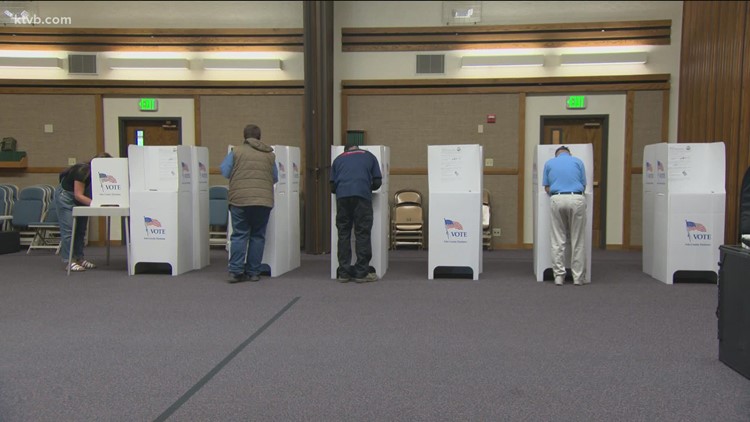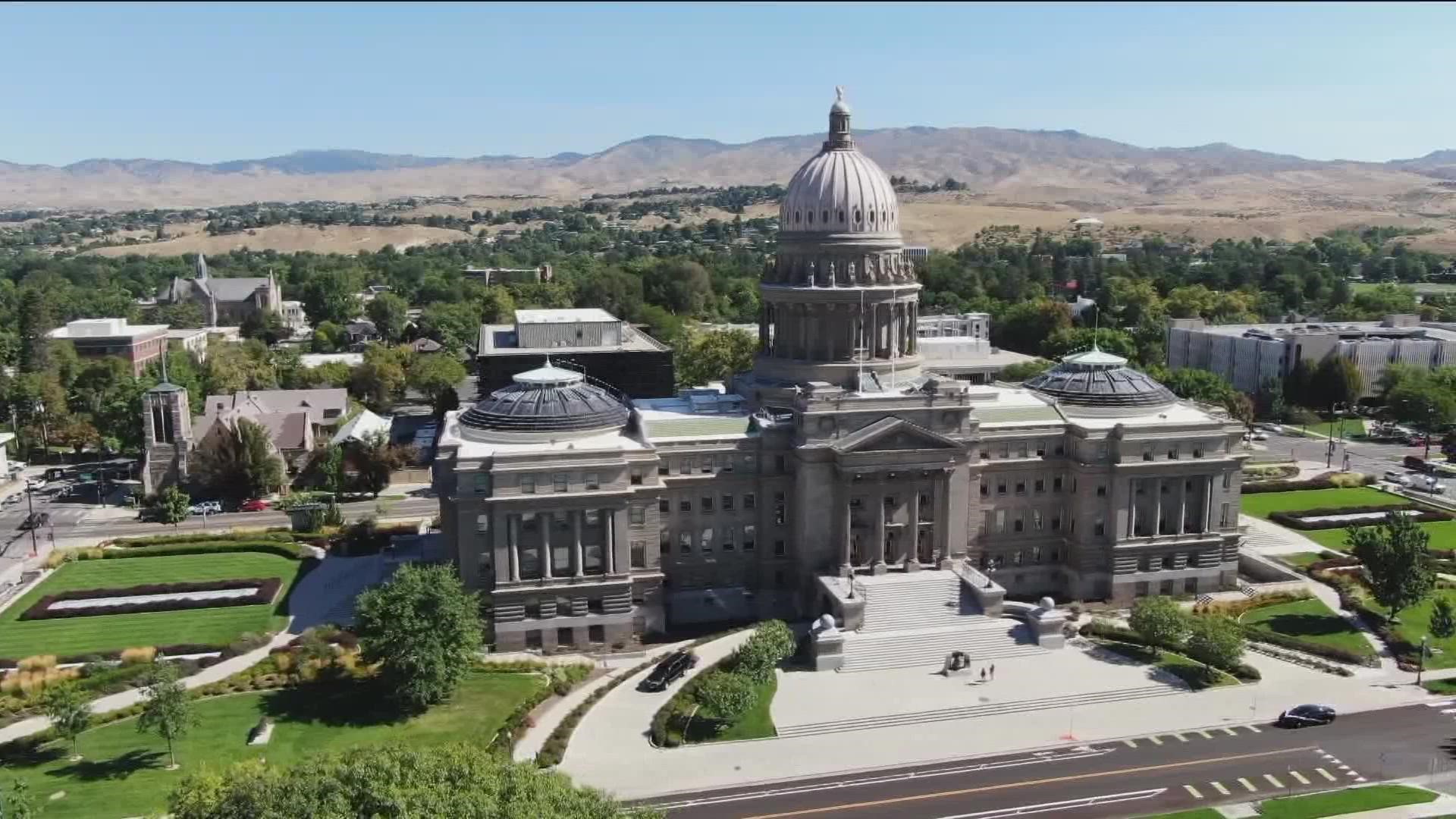BOISE, Idaho — This article originally appeared in the Idaho Press.
After all the calculations were made by each county last week to reflect election-day voter registrations, statewide voter turnout in the May 17 primary election came in almost exactly where it did four years earlier: 32.4% of registered voters cast ballots, compared to 32.6% in the 2018 primary.
In some ways, that indicates a strong turnout this year — because in 2018, there were hotly contested races for governor on both the Democratic and Republican primary ballots. “The governor’s race normally drives the turnout,” said former longtime Idaho Secretary of State Ben Ysursa.
“If you get a third, 33%, that’d be a great turnout. That’s a sad commentary on our process,” Ysursa said, “especially when the whole ballgame’s in the primary.”
That’s largely because in recent years, Idaho’s primary elections, particularly in the majority GOP primary, have been much more competitive than its general election races, with more hotly contested races and more contested races total.
But Idaho’s primary election voter turnout has been stagnant or declining for years, after a since-unmatched high in 1972 — the first year those age 18-20 were allowed to vote — when 58.3% of registered voters cast ballots in the Idaho primary.
“That was a big deal,” said Andy Brunelle, a retired Forest Service employee who worked for the state and tracked voter turnout as an editor for the Idaho Blue Book for many years, starting in the late 1970s. “It was the highest ever for where I have data.”
The next big year was 1980, when primary turnout hit 41.34% of registered voters — and 30.94% of the voting-age population, a figure not matched since. Idaho’s primary turnout as a percentage of the voting-age population hasn’t topped 26% since 1984, according to records tallied by the Idaho Secretary of State’s Office; it hit a low of 14.69% of the voting-age population in 2016.
In the 1980 election, Brunelle recalled, “There were huge voter-registration drives,” mainly driven by the Symms and Church campaigns. That was the year that then-GOP Congressman Steve Symms narrowly defeated longtime Democratic Idaho Sen. Frank Church. “The Church campaign and the Symms campaign were already in full swing, even though they had no opponents in the primary,” Brunelle said.
There also were plenty of contests on that year’s Idaho primary ballot, including a hot race between Larry Craig and Wayne Kidwell in the GOP primary for the 1st Congressional District seat. Craig was a state senator at the time and Kidwell was a former Idaho attorney general; Craig won, and went on to a long career in both the U.S. House and Senate before his career ended in scandal in 2009, after his 2007 arrest in a sex sting at the Minneapolis airport. There was a similarly close race between Glenn Nichols and Terry McKay on the Democratic side; the 2nd Congressional District also had a big primary that year between Republicans Jim Jones and incumbent George Hansen, who pulled out the win.
That November, Idaho’s voter turnout in the general election was 80.1% of registered voters, but that figure was pushed down some by the big upswell in the number of registered voters. The 1980 general election turnout was 69.05% of the voting-age population.
Idaho’s general-election turnout rates have generally remained high over the years. The 2020 November general election saw 81.16% of registered voters cast ballots, and 65.62% of the voting-age population. But primary election turnout has continued to lag.
One exception to that trend came in the very unusual 2020 May primary, which took place all by mail during the height of the COVID-19 pandemic. Every registered voter in the state was mailed a postcard notifying them the election was coming, and then another card they could send back to request an absentee ballot. As a result, primary turnout in that election hit 38.1% of registered voters, but only about 25% of the voting-age population. That same year’s presidential primary, which took place in March before the pandemic had hit Idaho, saw just 17.34% of the voting-age population cast ballots.
This year’s May primary, based on estimates of the voting-age population extrapolated from the last federal estimate tallied in July of 2021, saw roughly 22% of Idaho’s voting-age population participate.
As a percentage of registered voters, turnout varied widely among Idaho counties, but it followed roughly the same patterns it did four years ago. The highest turnouts — 54.7% and 53.8% — came in tiny Camas and Clark counties in eastern Idaho. North Idaho saw relatively high turnout, with 34.6% of registered voters participating in Kootenai County, 43.8% in Bonner County and 47% in Boundary County. In 2018, Kootenai County’s turnout was just under 30% of registered voters, while Bonner tallied 44.5% and Boundary, 40.4%.
Ada County’s turnout for the May 17 primary was 31.5% of registered voters; Canyon’s was 27.5%. Both are down just a couple of points from 2018 levels.
Phil McGrane, the current Ada County clerk who won the GOP primary for Idaho secretary of state and will face Democrat Shawn Keenan for the post in November, said, “In addition to seeing kind of a steady decline in voter turnout over the past 40 years, one of the other things we also see is a steady decline in voter registration. … So less of the population is registered today than it used to be, say in 1980.”
“I was happy to see that turnout was high for this election, and when I say that it’s relative to primaries in the recent past,” McGrane said. “But it’s still only 32%. Which means the vast majority of Idahoans did not participate. If a republic is based on the people selecting the people who are going to represent them, we do our very best when everyone feels represented by those who are elected.”
“We always see higher turnout in general elections,” he noted, “even though so much is going to be determined in these primary elections here in the state.”
This article originally appeared in the Idaho Press, read more on IdahoPress.com.
Watch more Idaho politics:
See all of our latest political coverage in our YouTube playlist:



